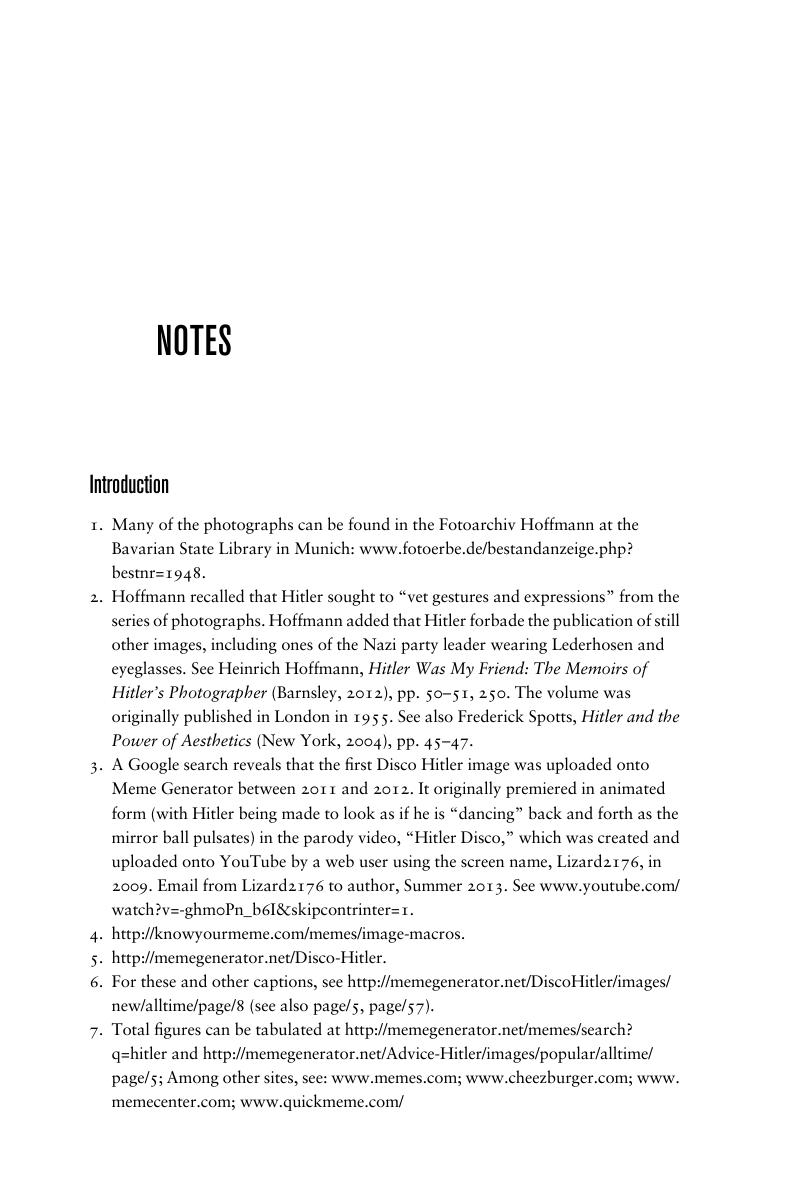Book contents
- Frontmatter
- Contents
- List of Figures
- Acknowledgments
- Introduction
- 1 A “good war” no more: The new World War II revisionism
- 2 From history to memory and back again: Debating the Holocaust’s uniqueness
- 3 Probing the limits of speculation: Counterfactualism and the Holocaust
- 4 Nazis that never were: new alternate histories of the Third Reich
- 5 Humanizing Hitler: the Führer in contemporary film
- 6 Between tragedy and farce: Nazism on the Internet
- Conclusion
- Notes
- Bibliography
- Index
- References
Notes
Published online by Cambridge University Press: 05 December 2014
- Frontmatter
- Contents
- List of Figures
- Acknowledgments
- Introduction
- 1 A “good war” no more: The new World War II revisionism
- 2 From history to memory and back again: Debating the Holocaust’s uniqueness
- 3 Probing the limits of speculation: Counterfactualism and the Holocaust
- 4 Nazis that never were: new alternate histories of the Third Reich
- 5 Humanizing Hitler: the Führer in contemporary film
- 6 Between tragedy and farce: Nazism on the Internet
- Conclusion
- Notes
- Bibliography
- Index
- References
Summary

- Type
- Chapter
- Information
- Hi Hitler!How the Nazi Past is Being Normalized in Contemporary Culture, pp. 350 - 436Publisher: Cambridge University PressPrint publication year: 2014



